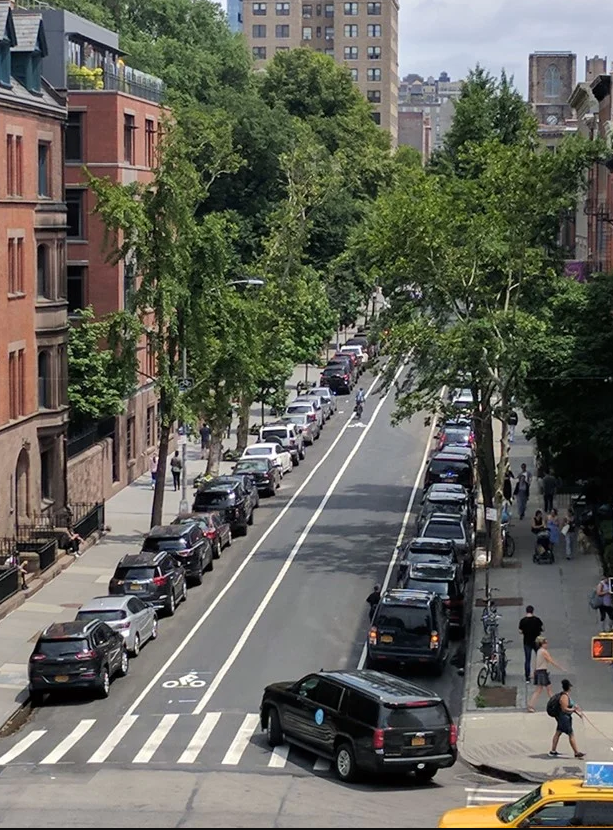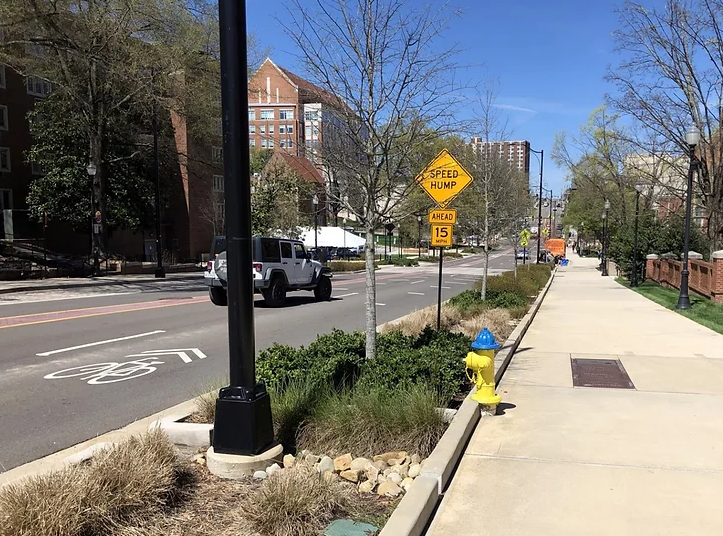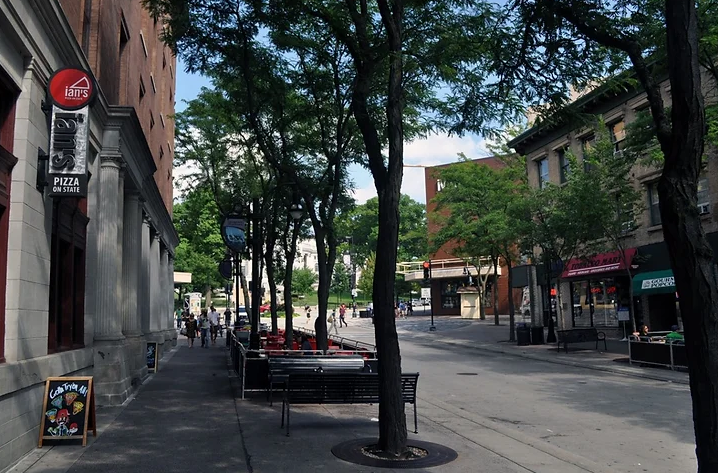The Amazing, Wonderful, Misunderstood Realm of the Collector Strip
The “Collector Strip” is possibly the most important element of a pedestrian-friendly street corridor yet it is perhaps the most misunderstood and underappreciated. Pedestrian-friendly street corridors are the lifeblood of cities, and they all have the same fundamental ingredients. While the size and character of each ingredient can vary, they should be located in their proper places in order to achieve a walkable and business-friendly environment. These fundamental ingredients are:· Vehicular travel lanes/turn lanes· On-street parking· Collector Strip · Sidewalk· Private space/yard (optional) · BuildingsSometimes called the “Furniture Strip”, “Tree Strip”, or “Curb Zone”, the Collector Strip is the space between the roadway curb and the sidewalk. Many traffic engineers don’t acknowledge the Collector Strip as its own element. They consider the sidewalk to be the entire area, usually concrete, which extends all of the way to the curb. This perspective leads to poor design decisions and missed opportunities. It is far better to consider these as two separate, distinct elements: the Sidewalk and the Collector Strip. When designers and engineers treat the Collector Strip as its own element, then it can be designed with appropriate care and assigned significance. It can become a valuable component of a community’s personality and commerce and, when thoughtfully cultivated, can make the pedestrian experience comfortable and even fun. In predominantly residential areas the ubiquitous Collector Strip is grassy and hosts street trees, street lights, and a few signs. Even in this seemingly indistinct, tree-only context, Collector Strips can come in a range of sizes – each delivering a different scale and character for a neighborhood. For example, a Collector Strip can host large trees indicating a sense of quality and permanence. Collector Strips can indicate what is cherished by a community and integral to their set of values and beliefs. Components within a Collector Strip can offer property owners a chance to imprint their style in a public manner, enticing personal engagement in the public realm. In urban areas, the Collector Strip hosts standard elements such as street trees, traffic signs, and streetlights. But it can also hold other utilitarian items such as benches, mailboxes (yes we still have those), garbage/recycling receptacles, fire hydrants, parking meters/kiosks, and sandwich board signs.If substantially wide, Collector Strips can host other features such as wayfinding, informational kiosks, public art, and other character-defining attributes. They also offer the best places for bus/mass transit stops, bike racks, and micro-mobility vehicles such as scooters – assuming riders leave scooters where they should. It “collects” the street architecture and loose objects of a district into one linear area. Both the placement and size of a Collector Strip are crucial to making a pedestrian-friendly street corridor. Unfortunately, too many communities don’t understand the critical role that Collector Strips play in pedestrian-friendly environments. Or they prioritize speed and convenience for drivers over the lives of pedestrians. If it’s reduced in size, especially along a roadway where vehicles drive fast, then the pedestrians’ experience is not only uncomfortable – it’s unsafe. Money spent on nice materials or light fixtures is wasted. Worse, sometimes street trees, streetlights, and other street architecture that should be placed in the Collector Strip (between the curb and sidewalk) are positioned outside the sidewalk. Design of the collector strip and elements within is sometimes a community’s biggest opportunity to customize the civic character it wishes to present to visitors. Some communities populate the Collector Strip with special signage, art, and hallmarks of heritage which reveals a community’s personality and grows civic pride. Collector Strips can hold elaborate, even opulent landscapes and artistic features. Collector strips can be wide or narrow, softscaped or hardscaped, full of architectural and artistic elements or sparsely filled. The character of a community can largely be reflected by what that community chooses to place in its Collector Strips. Collector Strips also offer a way for communities to integrate environmentally-friendly features such as productive stormwater management. If wide enough and well cultivated, Collector Strips can become occupiable spaces where people can gather or dine.Collector Strips should be designed with thoughtful intent, not simply produced as the residual space on the street side of a sidewalk. Whenever street construction projects are being engineered, community stakeholders should insert themselves into the process if not invited. Street corridors are the purview of everyone and their design is not a mystical science that only a few, technically-aware professionals can produce. Enlightenment comes from living and use. When at the design table, stakeholders should advocate for the proper placement and size of every Collector Strip on every street. Then, they should fill those otherwise forgotten zones with the street architecture that defines their community. No matter what ingredients are introduced, Collector Strips present the flavor of a place to all visitors. Author Bio:Jeff Raser, AIA, is the owner of Cincinnati Urban Design and Architecture Studio (CUDA Studio). Jeff has worked as an architect in a 30+ year career designing dozens of projects. Jeff is a co-chair of CNU-32 in Cincinnati. He first joined the Congress for the New Urbanism in 2002; the first Congress he attended was CNU XI held in Washington DC in 2003. Jeff is an advocate for the design and codification of pedestrian-friendly, mixed-use places. He has written and lectured on the fundamentals of good urban design – all of which are well described in the Charter for the New Urbanism. 















